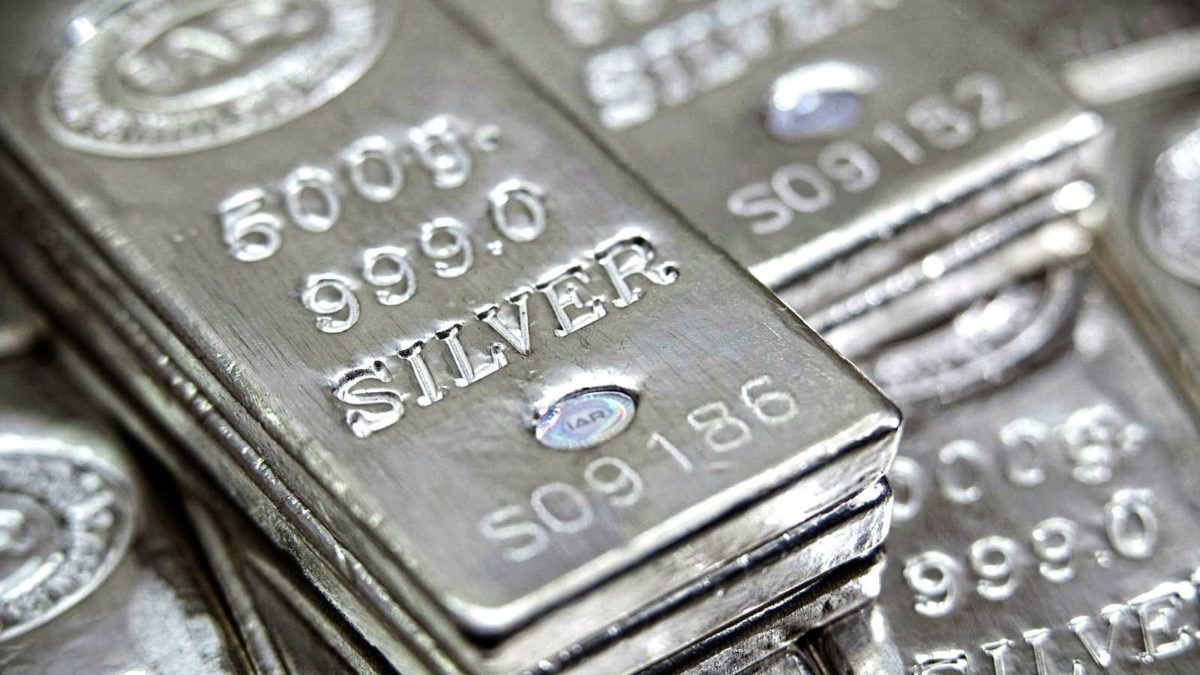Silver looking to upstage big brother gold on medal podium
The forgotten precious metal – silver – is quietly having a blinder of a year. With a 34.7% gain so far, silver is outperforming gold, the S&P 500, the Dow Jones Industrial Average, the DAX Index in Germany, and the Nikkei index in Tokyo.
At US$24.27 an ounce, silver is up 63.3% since March, but has retreated since its US$29.00 high-point in August. London-based consultancy Metals Focus says the price rally will resume later this year, and continue well into 2021. Metals Focus expects to see silver pushing “well above” US$30-US$42 an ounce next year.
What’s happening? Put it down to silver’s dual (even triple) personality, as a hard-working industrial metal; a staple of the new Green nirvana; and a precious metal, with the traditional safe-haven attractions.
Analysts say the silver price is being boosted by increased industrial demand, for example from the electric-vehicle (EV) and solar energy sectors. Simultaneously, investors are still flocking to perceived stable assets such as the precious metals.
The crucial point for silver is that its range of uses is expanding, in particular, the increasing demand from the electric-vehicle and renewable energy sectors. Silver is a major component of solar photovoltaic (PV) panels – being an excellent conductor of both heat and electricity – and it is also essential in wind turbines and batteries.
With solar power generation expected to nearly double by 2025, this sector is projected to remain an important and consistent source of industrial demand for silver over the next ten years, while underpinning silver’s role as a green metal, according to silver industry association, The Silver Institute.
This potential for silver was underlined in March, when researchers at Samsung unveiled a solid-state battery that for the first time used a silver-carbon composite layer as the anode – a battery that could be both smaller and safer than the lithium-ion batteries that currently dominate the EV world.
German cryptocurrency information platform Kryptoszene.de projects the annual demand for silver to increase by almost 90% by 2035, collated from investment bank forecasts. Annual global demand for silver currently amounts to 2,300 tonnes: by 2035, this is set to rise to 4,300 tonnes, with increased requirements from the solar energy industry one of the main drivers of demand.
Silver holdings in exchange-traded funds (ETFs) increased by 9,237 tonnes in the first three quarters of the year, on Kryptoszene’s numbers – that is a rate of increase running at almost three times 2019’s levels.
So, how do Australian investors play this trend?
A couple of ETFs give varying levels of exposure.
The most directly targeted is ETFS Physical Silver (ASX code: ETPMAG) offers low-cost access to physical silver through one stock exchange-traded security, avoiding the need for investors to personally store their own bullion. ETPMAG is backed by physically allocated silver bullion held by the custodian, JPMorgan Chase Bank, in London. Each physical bar is segregated, individually identified, and allocated which means there is no credit risk. Investors can choose to redeem units for the physical holdings. EPTMAG is managed for 0.49% a year.
The ETFS Physical PM Basket (ASX code: ETPMPM) offers simple access, through one stock exchange-traded security, to a basket of physical gold, silver, platinum and palladium, avoiding the need for investors to personally store their own bullion. Right now, ETPMPM is allocated 47.9% to gold, 26.8% to palladium, 18% to silver and 5.4% to platinum. EPTMPM is managed for 0.44% a year.
For more adventurous types, there are a handful of pure-play silver miners – none of which is actually yet mining the metal.
Silver Mines (ASX: SVL) is sitting on one of the world’s largest silver deposits, at its Bowdens project near Mudgee in central New South Wales. Last month, SVL reported stunning high-grade drilling results at Bowdens – including grades up to 706 grams per tonne (g/t) equivalent from the Northwest High-Grade Zone. For the first time, this drilling encountered rich gold mineralisation (there is also zinc and lead).
Manuka Resources (MKR) is already a gold producer, from ore stockpiles at its Wonawinta project in the Cobar Basin of NSW, but is also forecasting first silver production in 2021 (second or third quarter) and expects to be producing 2 million ounces of silver a year from its 52 million ounces silver resource. Wonawinta hosts a 52 million-ounce JORC-compliant resource grading 42 g/t tonne silver.
The initial phase of gold production is expected to yield 22,000-24,000 ounces, with proceeds from the sale of the gold expected to allow the company to pay down US$14 million in debt on its balance sheet in full. In the second half of next year, the focus will shift to silver production. Including stockpiles and shallow oxide material, Wonawinta contains a total JORC compliant resources of 38.8 million tonnes at 42 g/t silver for 52.4 million ounces. Within this is a higher-grade component, of 4.5 million tonnes at 97 g/t.
Manuka also owns the Mt Boppy gold mine in the Cobar Basin, which started production in April: the company is targeting 32,000 ounces a year of gold production from Mt Boppy.
Investigator Resources (IVR) owns the Paris silver project on the Eyre Peninsula in South Australia, a potential one-million-tonnes-a-year mine, which the company says is the highest-grade undeveloped silver project in Australia (of those where silver will be the main product).
Paris contains a resource of 9.3 million tonnes at 139 g/t silver and 0.6% lead for 42 million ounces of contained silver and 55,000 tonnes of contained lead. The indicated component stands at 4.3 million tonnes at 163 g/t silver and 0.6% for a contained 23Moz of silver and 26,000t of lead.
Outside Australia, Mithril Resources (MTH) has the Cometa project in Mexico; and Adriatic Metals (ADT) has silver as part of its Vares polymetallic project in Bosnia & Herzegovina, but the most intriguing play is arguably Myanmar Metals (MYL), with its Bawdwin silver-zinc-lead project in Myanmar. Production at Bawdwin is projected to begins in 2022/23, and Bawdwin is predicted to be one of the ten largest silver mines in the world, as well as the world’s third-largest lead producer.










